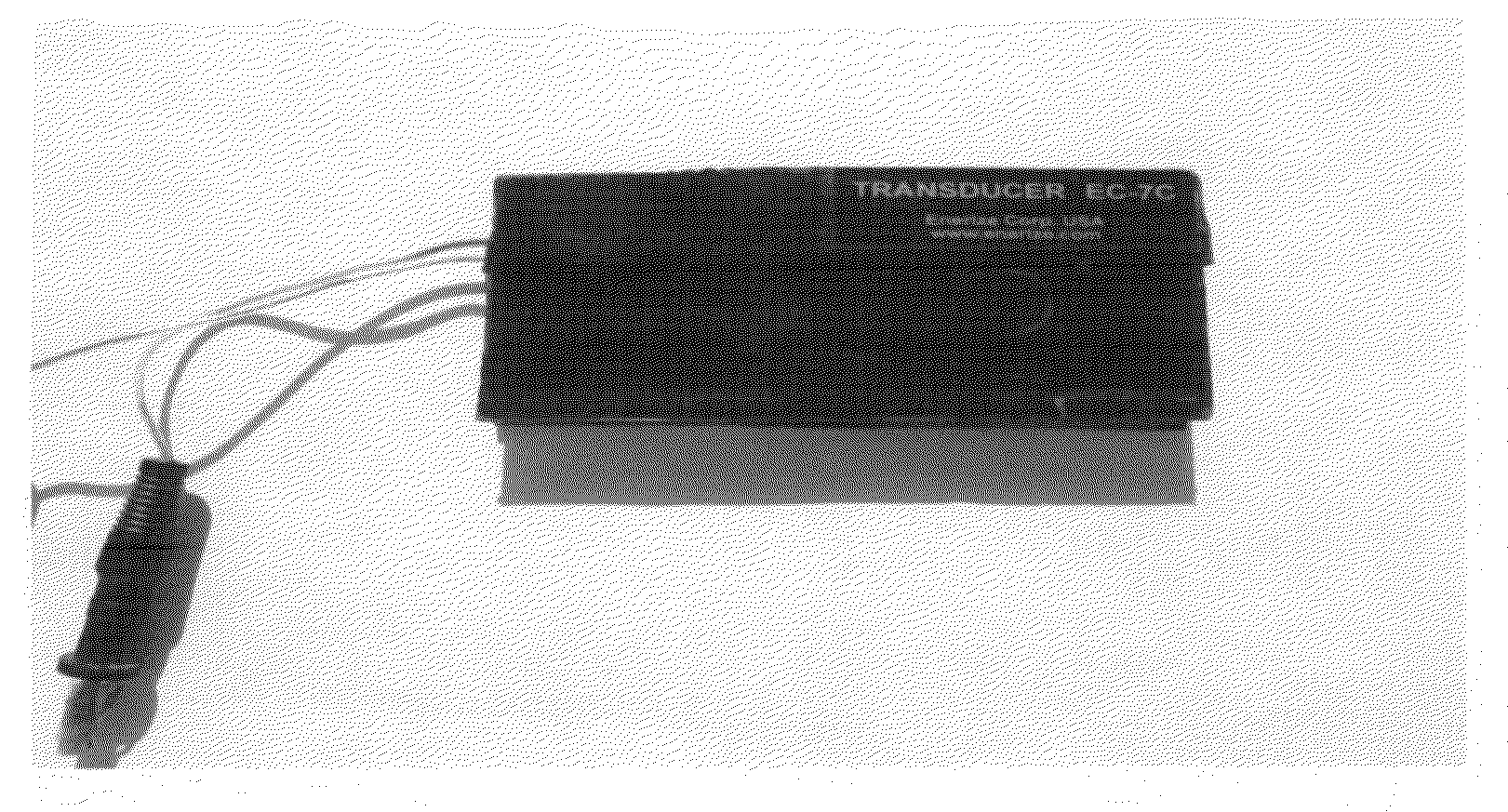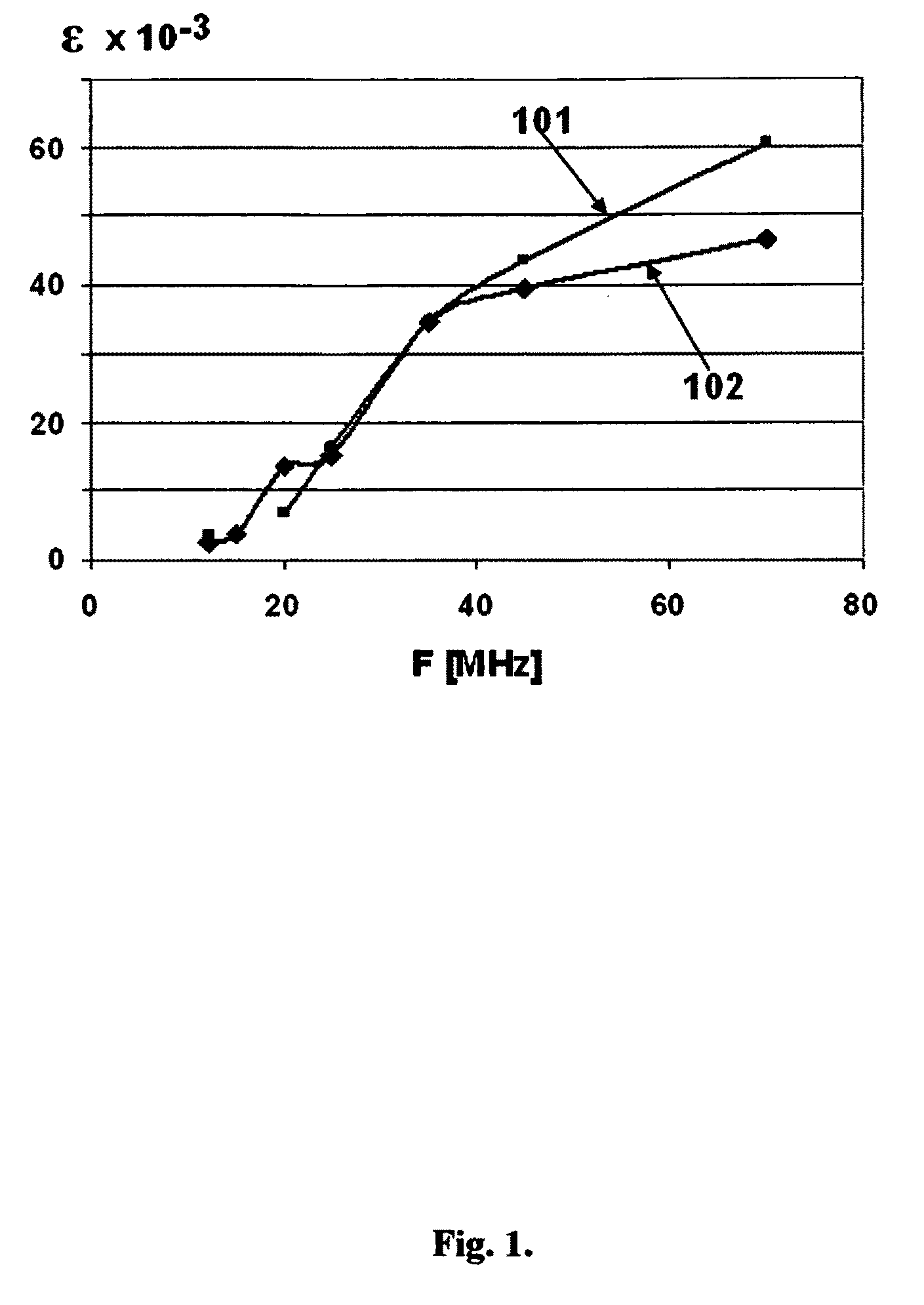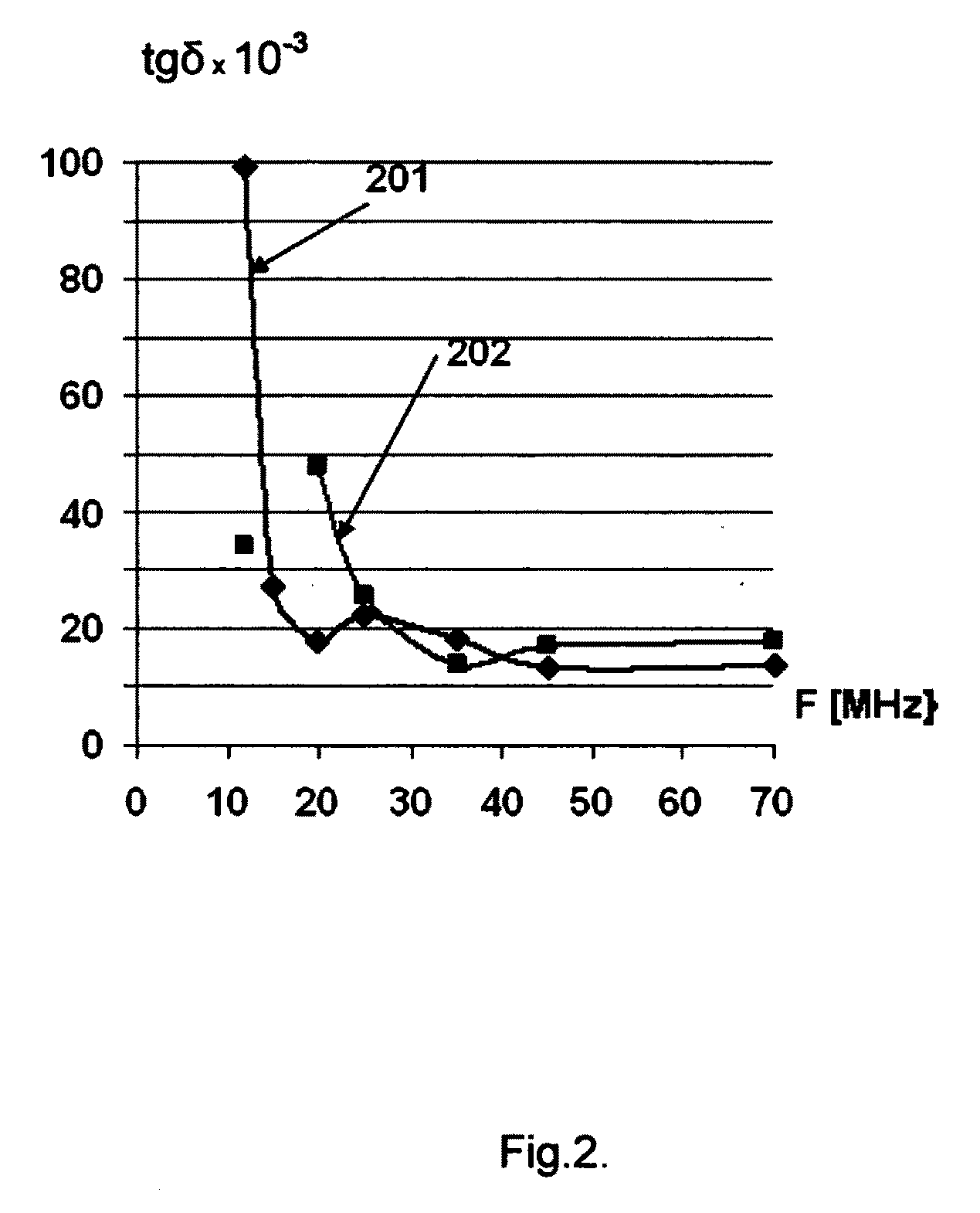Method and device for rapid non-destructive quality control of powdered materials
a non-destructive and powdered technology, applied in the direction of resistance/reactance/impedence, instruments, material analysis, etc., can solve the problems of not being able to achieve rapid quality control of powdered materials, and consuming a great deal of tim
- Summary
- Abstract
- Description
- Claims
- Application Information
AI Technical Summary
Benefits of technology
Problems solved by technology
Method used
Image
Examples
example 1
[0094]The cylindrical capacitive transducer has copper electrodes that are 70 mm×30 mm with a thickness of 10-20 μm. The electrodes are made as half-cylinders and mounted inside the lower part of the trasducer case made of dielectric in a cylinder-like form. The diameter of the dielectric is 60 mm and the height is 70 mm. The thickness of the wall in the areas of electrodes is 1.00 mm. As an auxiliary induction for the circuit, a coil with a diameter of 18 mm, together with two wire coils with an outside diameter of 0.84 mm was connected to it is used.
[0095]Since the height of the entire cylindrical part of the capacitive transducer is commensurable with the entire height of the transducer L1 and compatible with the height of the copper electrode L2 the capacitance is described by the expression (16):
C=ɛ0ɛrL2πlnsin(φ3-φ02)sin(φ2-φ12)sin(φ2-φ02)sin(φ3-φ12),(16)
where:[0096]∈0=8.854×10−12,[0097]∈r=∈′=1,[0098]Φ—are the values of angles of electrode segment in a cylindrical co-ordinate s...
example 2
[0113]A capacitive transducer is made of two parallel electrodes of copper foil of size 120 mm×30 mm with a thickness of 20 microns. Electrodes are placed inside the lower part of dielectric transducer case. The distance between the electrodes is 4 mm. The thickness of dielectric wall in the area of electrodes is 1 mm. In the case when the total area of condenser parallel plates is large, such that the electric field distorting effect can be ignored on the plate edges, Gauss's law was applied:
C=∈0∈′S / d=8.854×10−12×∈′S / d=7.969 pF, (19)
[0114]In this case, transducer capacitance is higher as compared with the cylindrical transducers in Example 1. The increased capacitance as compared with Example 1 allows increased sensitivity. Measurements were made by the instrument described in Example 1. The same samples of cement-based compositions were used.
[0115]The results of measurements are presented in Table 2. On the basis of these data diagrams were drawn (FIG. 3-6), which illustrates the...
example 3
[0120]In this example, results of powder testing using transducer EC-5C are shown (FIG. 7). The transducer has parallel flat electrodes of copper foil. Electrodes sizes are: a=100 mm, b=12.5 mm and thickness=15 microns. Electrodes are mounted inside the lower part of a transducer case. The case is made of dielectric. The thickness of the wall in the area of the electrodes is 1 mm. The distance between electrodes L is 7 mm. The increased distance between electrodes is needed to ensure even filling of the space between electrodes when a transducer is inserted into the powder being tested.
[0121]To compute capacitance of a capacitor with increased space between electrodes equations (6 and 7) were applied. The equation takes into account the distortion of the field at the capacitor edges caused by the electrodes plates.
C=4ɛabl+0.5C0,(21)
where;
C0≅16ɛaabarcshba+arcshab.(22)
[0122]The resulting capacitance value is C=2.45 pF.
[0123]An experimental measurement of the transducer capacitance ove...
PUM
 Login to View More
Login to View More Abstract
Description
Claims
Application Information
 Login to View More
Login to View More - R&D
- Intellectual Property
- Life Sciences
- Materials
- Tech Scout
- Unparalleled Data Quality
- Higher Quality Content
- 60% Fewer Hallucinations
Browse by: Latest US Patents, China's latest patents, Technical Efficacy Thesaurus, Application Domain, Technology Topic, Popular Technical Reports.
© 2025 PatSnap. All rights reserved.Legal|Privacy policy|Modern Slavery Act Transparency Statement|Sitemap|About US| Contact US: help@patsnap.com



